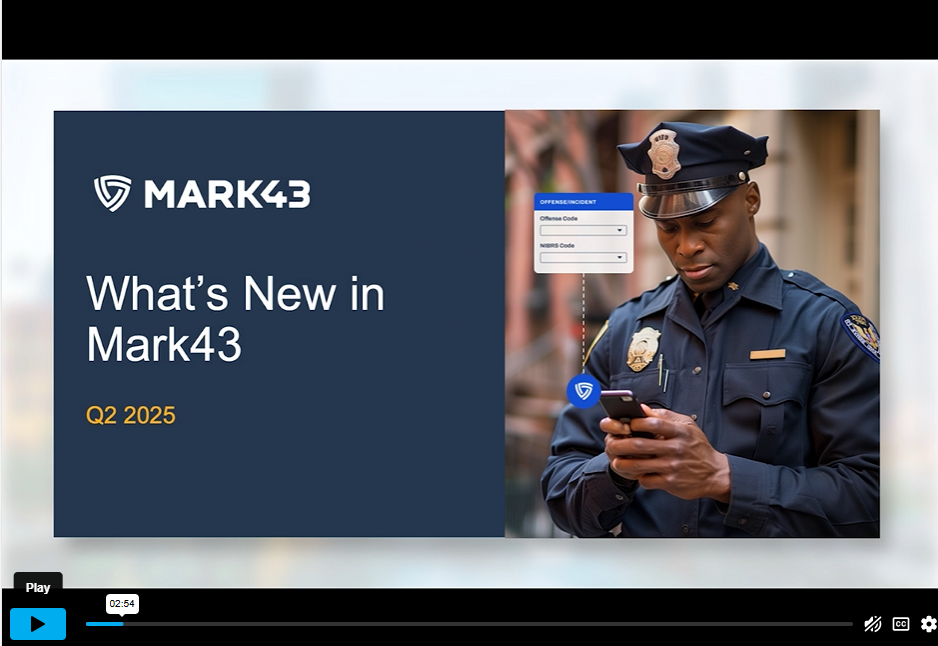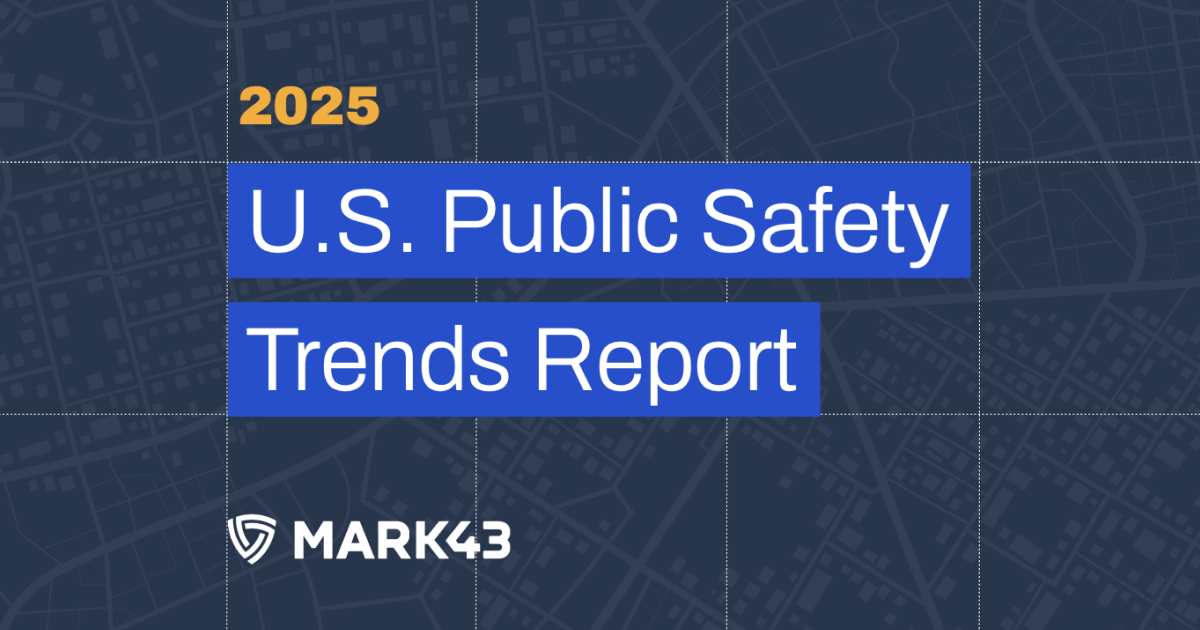
As an engineer on the Technical Services team at Mark43, I live and breathe crime data — how it’s stored, managed, and collected. There’s a lot of talk about “big data” in policing, and its potential to help law enforcement predict and solve crime faster. While many departments try to invest in the latest crime analysis tools, they don’t realize that they should be focusing on quality data collection first in order to make these programs worthwhile.
Every officer’s interaction with the public is a new data point, so the quality of community data relies solely on the department’s Records Management System (RMS) and its patrol force. In a typical arrest report, 70% of the information is gathered by the arresting officer, the rest being system-generated from the 911 event or subsequent supervisor approvals. Unfortunately, most officers don’t have the ability to quickly and completely record this information in a typical RMS report.
This potential wealth of information on crime, locations, property, and people is lost when patrol officers collect and report inaccurate information or store data in systems that are almost impossible to use or interpret. With an RMS optimized for patrol, departments have the ability to better prepare officers for the streets, assist detectives in solving cases, and fuel stronger resource allocation. Patrol data is a department’s best source of free “big data” and should be aiding crime analysis, not causing harm.
How to make the most of your patrol data
Agencies can strengthen patrol data in a number of ways. As the first step of data collection resides with patrol officers, their role in an agency’s relationship with data is critical and valuable. Internal policies that show an investment in the patrol officer’s role in data set the tone. Below are some common causes of data inaccuracy and how to combat them.
Human Error
Many times poor data collection and reporting results from human error. Because patrol officers are responsible for a myriad of tasks while out on the streets, data entry isn’t always their main focus — nor should it be. Typical RMS systems have historically been cumbersome, confusing, and time-consuming. If an RMS system compensated for human error, while ensuring the data is still accurate, agencies could overcome most of these issues. Functionality like required fields, spell check, dropdown fields, checkboxes, and field validations are all force-multipliers.
Disparate systems
I’ve visited a lot of agencies with disparate systems that are unable to configure past data with current data. Many agencies are in this situation because they have used different incompatible RMS systems. This makes data unsearchable and thus worthless to the department. When looking for a new RMS, making sure the data you collect will be comparable or can be converted to other systems. This will save your agency a lot of time and money, as well as maintain the access you have to your data.
Data Duplication
Duplicate persons, locations, property or cases dilute the value of your data and skew the reports. Certain restaurants, bars or apartment complexes may change ownership or identification over the years, but that does not mean the incidents or arrests associated with them should not be actionable. Purchasing an RMS that prevents duplication by creating master entities will keep your data sets clean. It will also save your IT and records managers from spending hours removing duplicates.
IT & Records Administrators Burden
Many times the burden of keeping the data accurate and clean falls on the IT and Records Administrators. It is their responsibility to code incidents into UCR codes and ensure the data is accurate enough to pull crime reports. By using software that automatically codes incidents to the correct UCR code, IT and records teams will no longer have to guess how an incident should be coded.
Consequences of bad data
Bad data can have serious consequences for agencies. One agency inaccurately reported their crime data to the FBI, and the overstated crime rate caused unnecessary community concern. Reporting inaccurate data can cause agencies to lose grant funding through their state. Other agencies have experienced missing criminal profiles and missing reports. This can result in agencies working with missing data on people of interest or possible suspects, thus putting the community at risk.
How agencies can benefit from good data
Accurate and complete data keeps officers safe. A system that can track data effectively — master locations, people, property, and incidents — can be used to inform and prepare officers when approaching situations with RMS history. A system that tracks data with ease can also keep officers focused on their main role — policing.
However, patrol officers aren’t the only ones benefiting from good data reporting. Detectives rely on data to build a case. With complete pictures of incidents, they can have a holistic view of the crime. Without reliable data, the strength of their cases suffer — if cases go cold, justice is not served.
Most importantly, accurate and clear data provides agencies with the potential benefits “big data” advocates have long promoted. When departments can analyze and share what’s happening in their jurisdiction, law enforcement can work more effectively to keep our communities safe.
Are you considering a new RMS for your department and don’t know where to start? Shoot us an email at info@mark43.com. We’d be happy to share more best practices on crime data collection.







